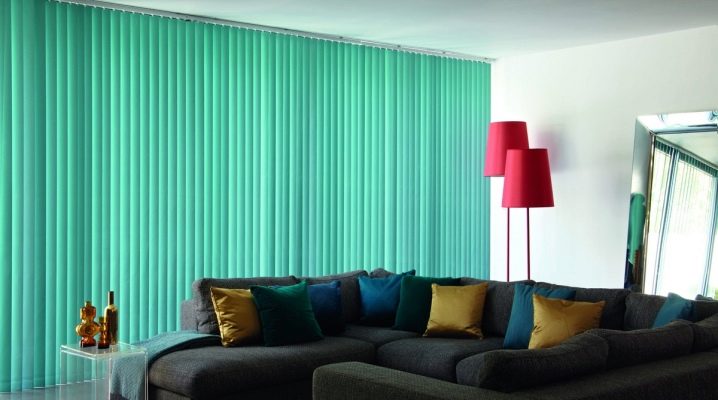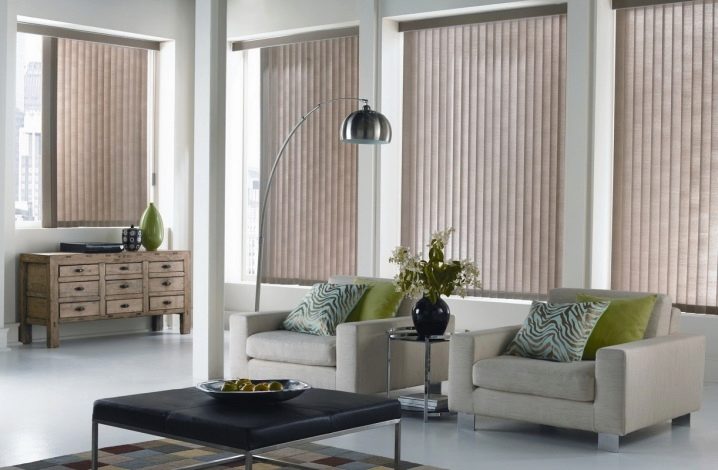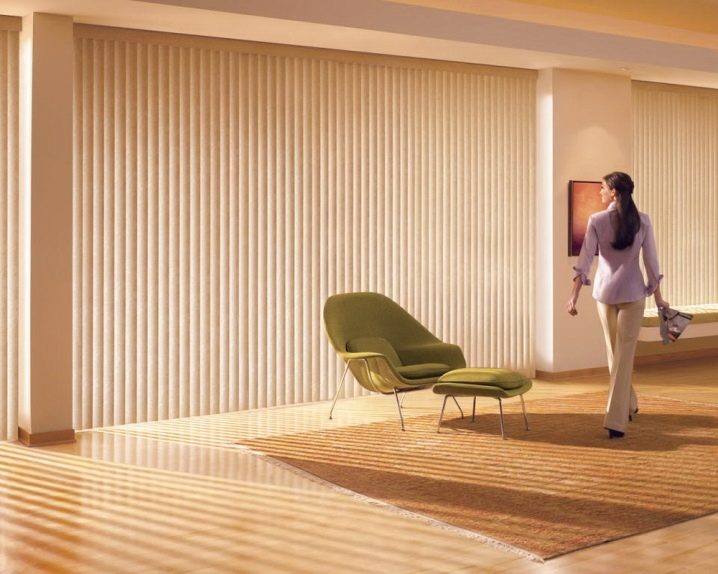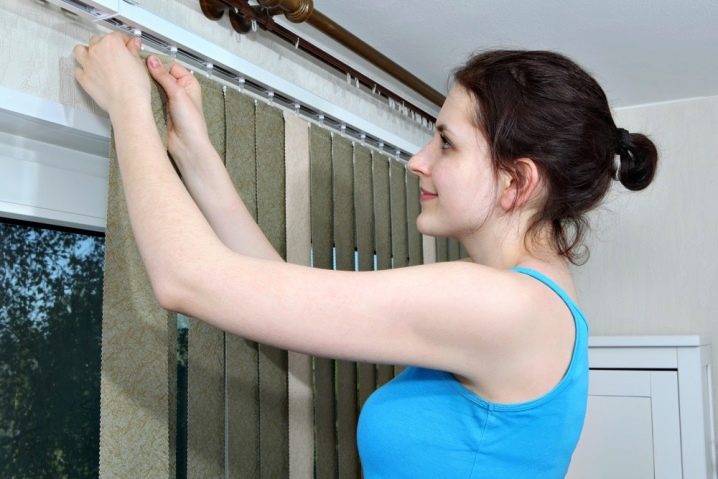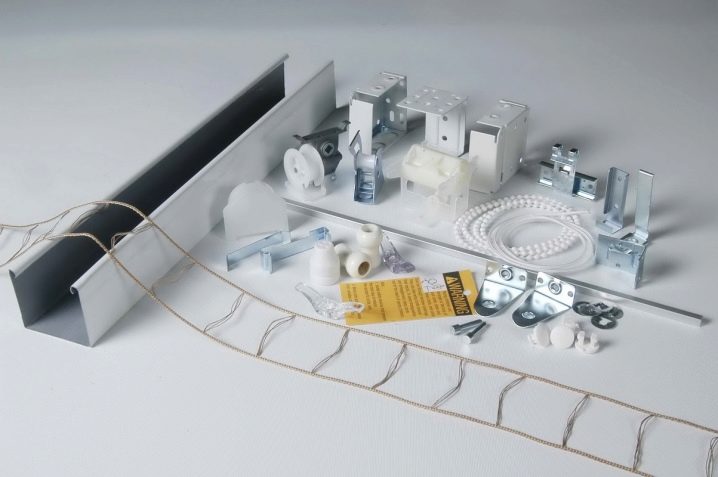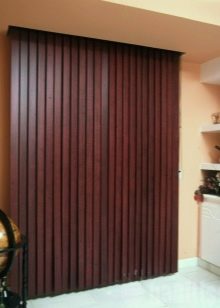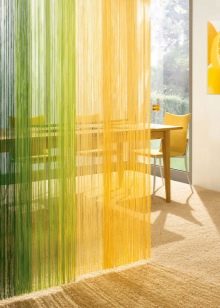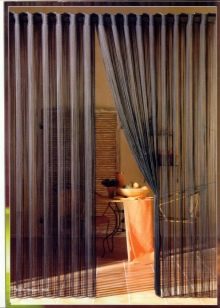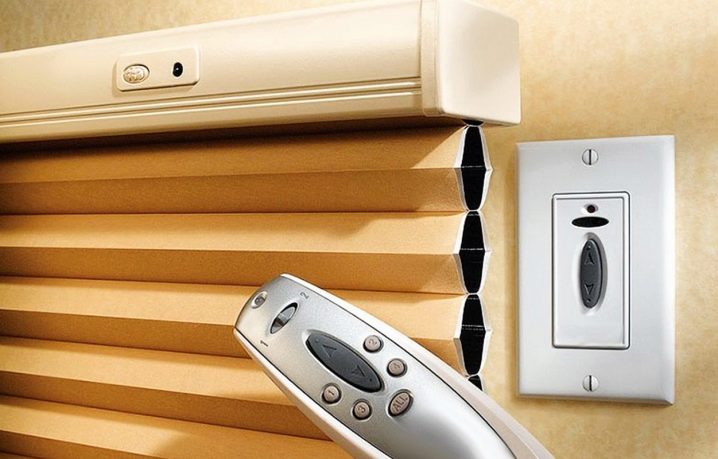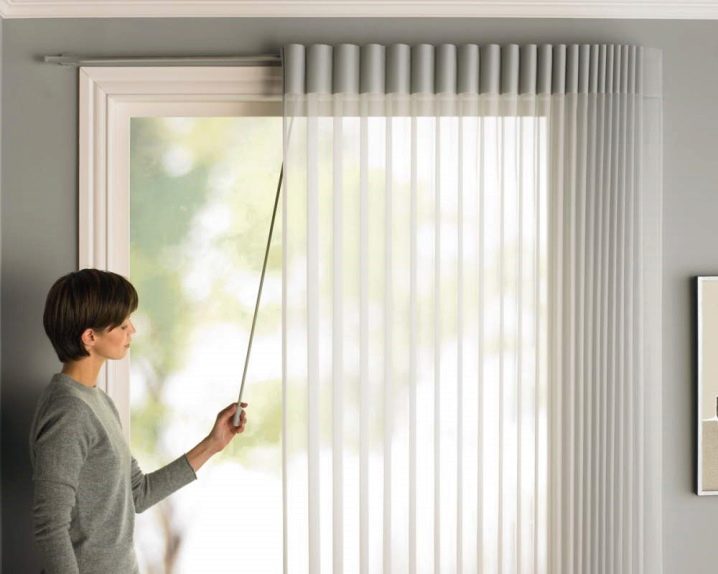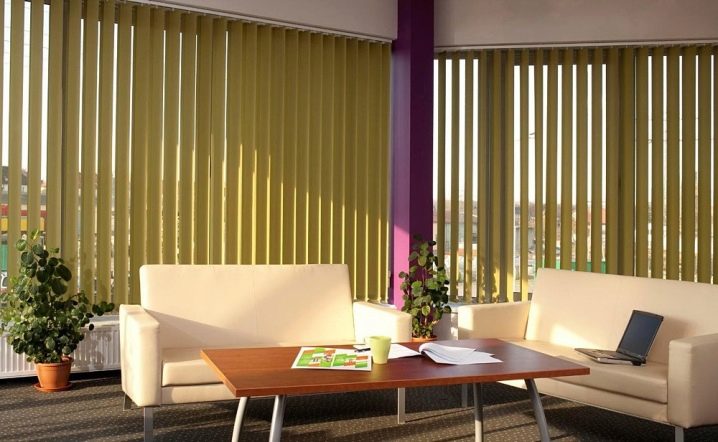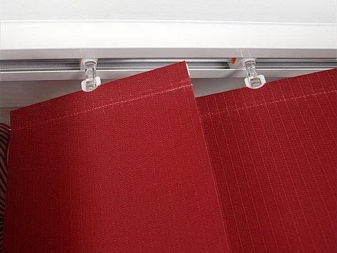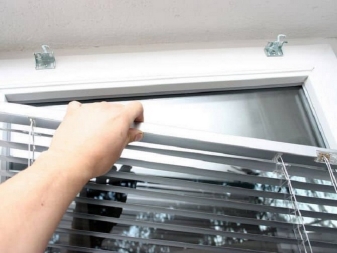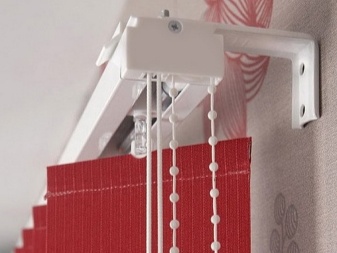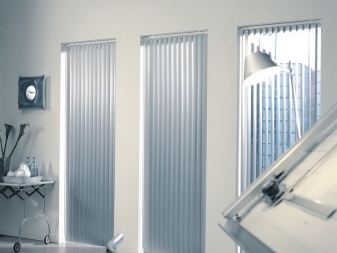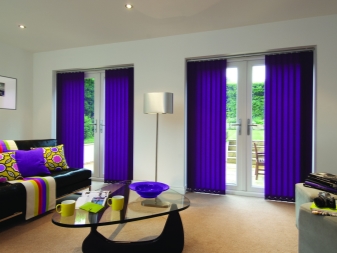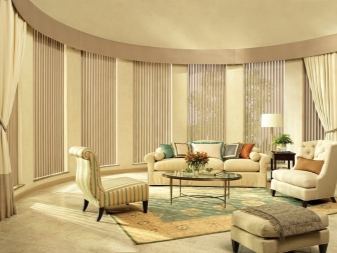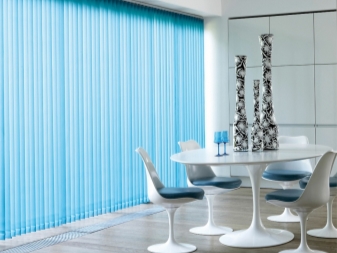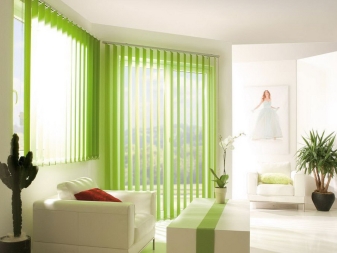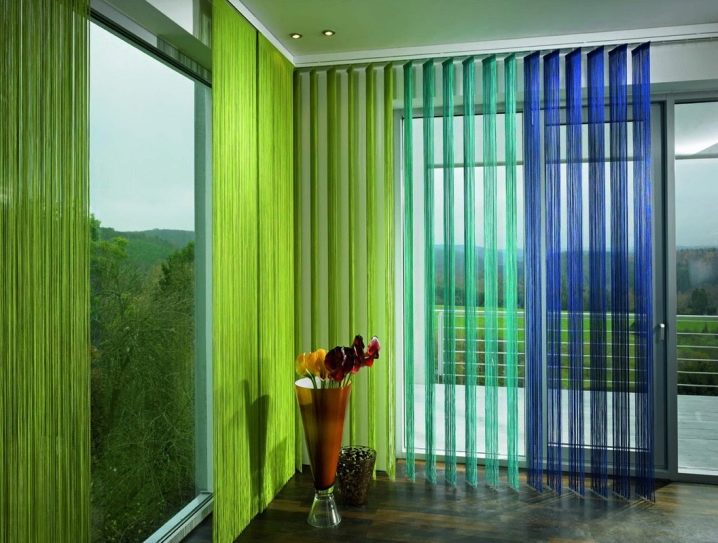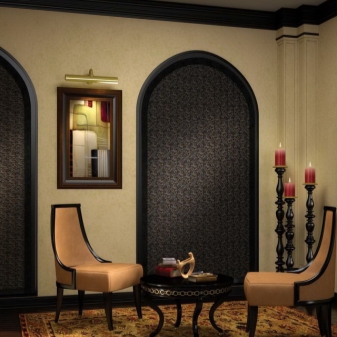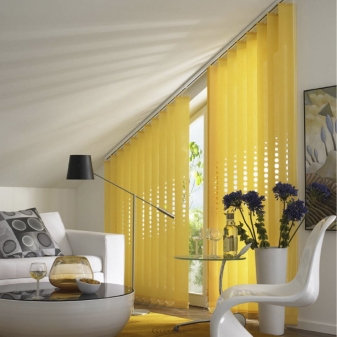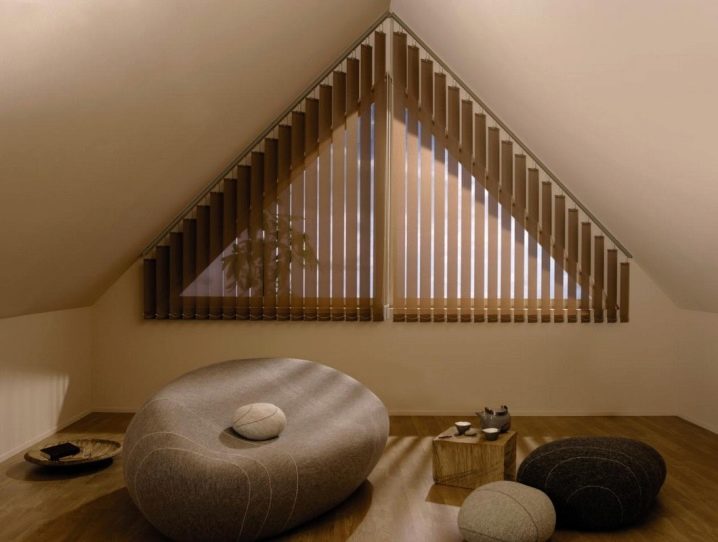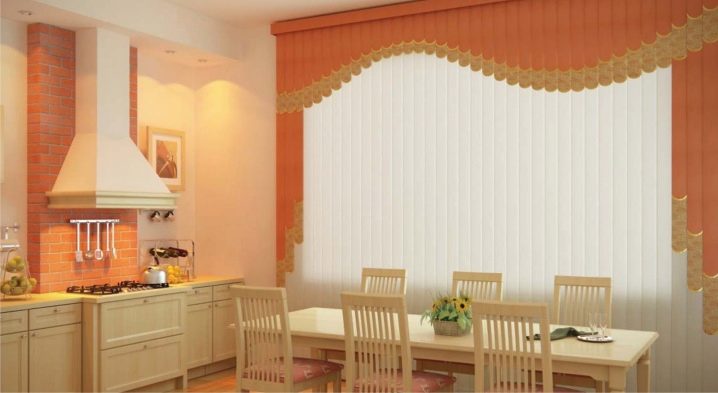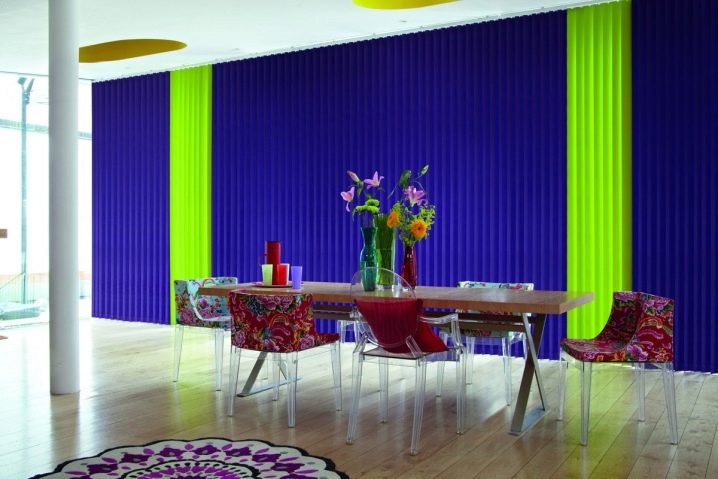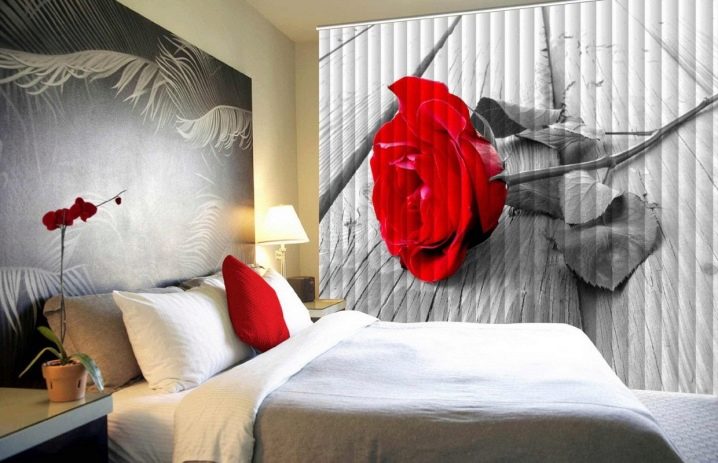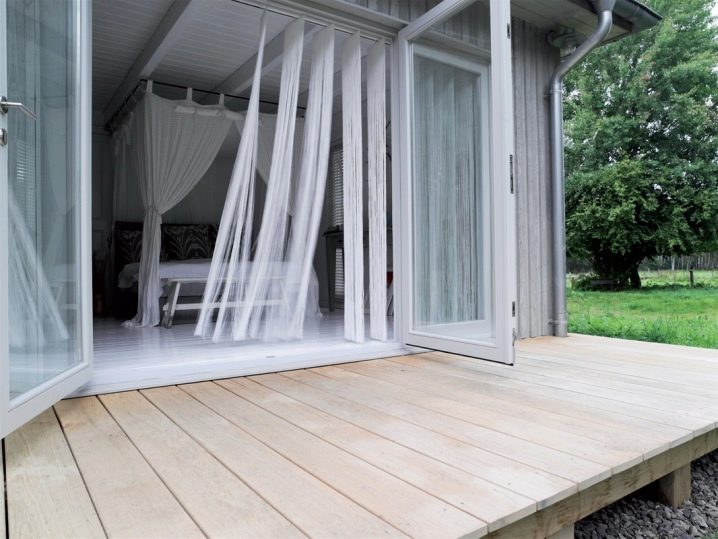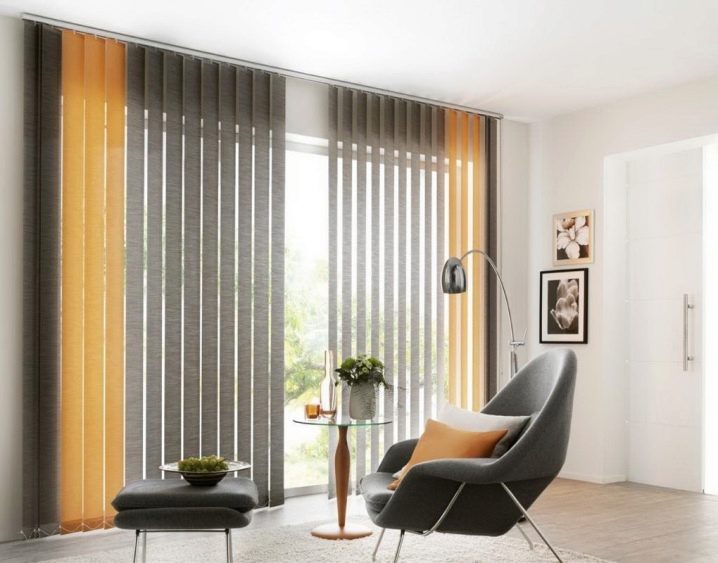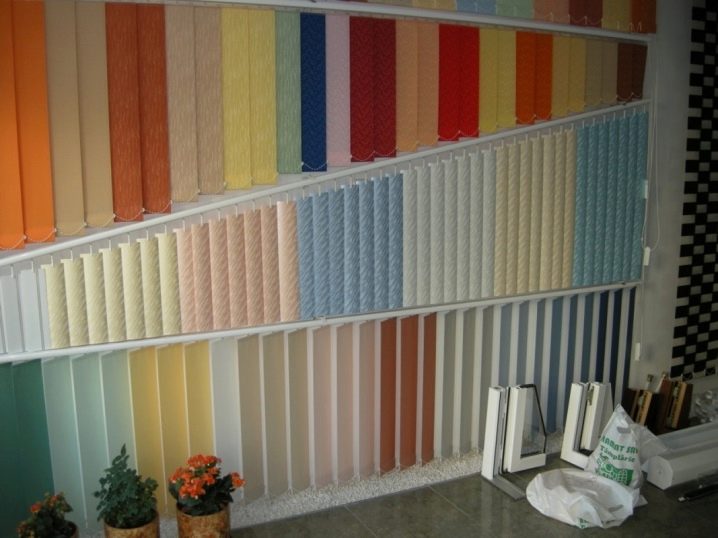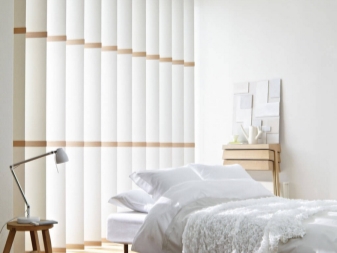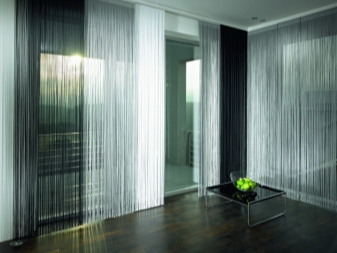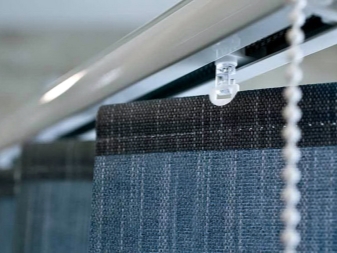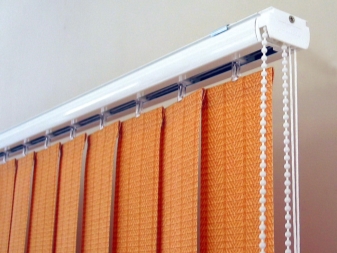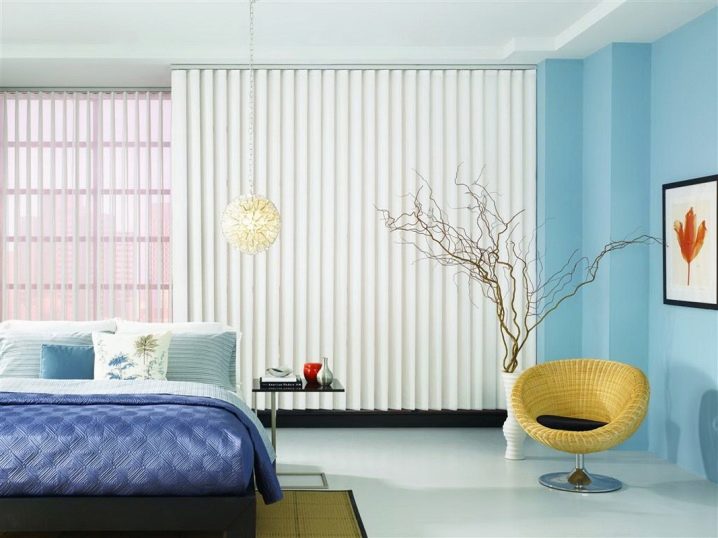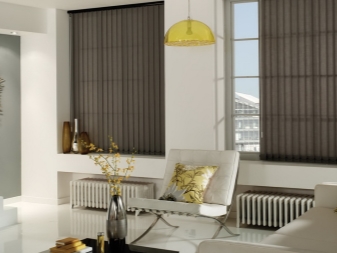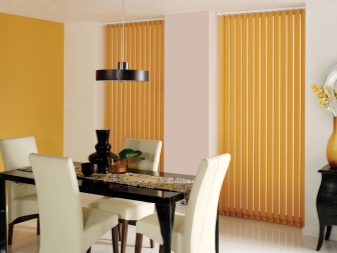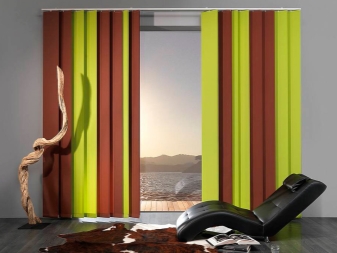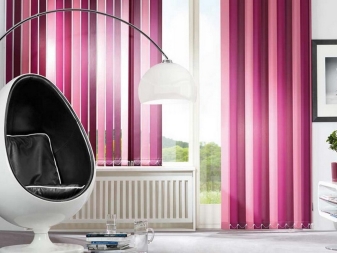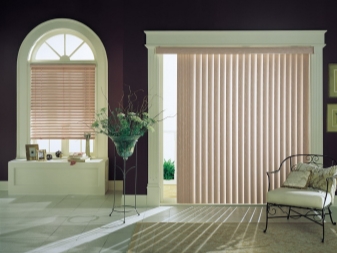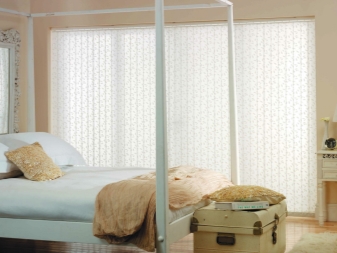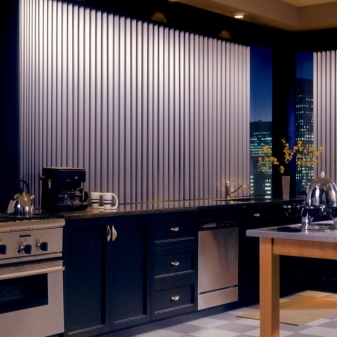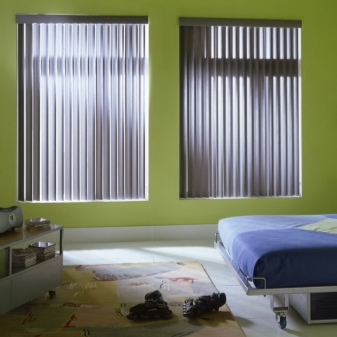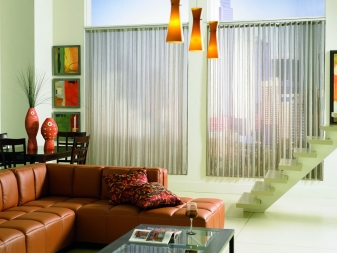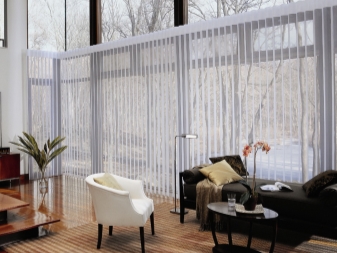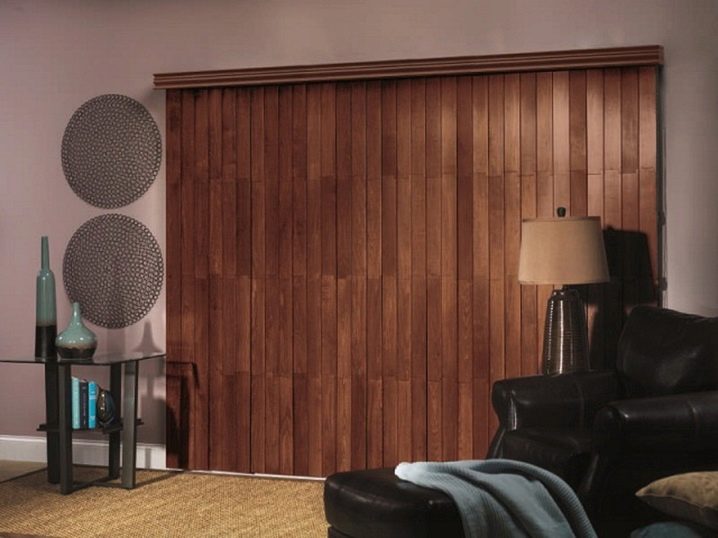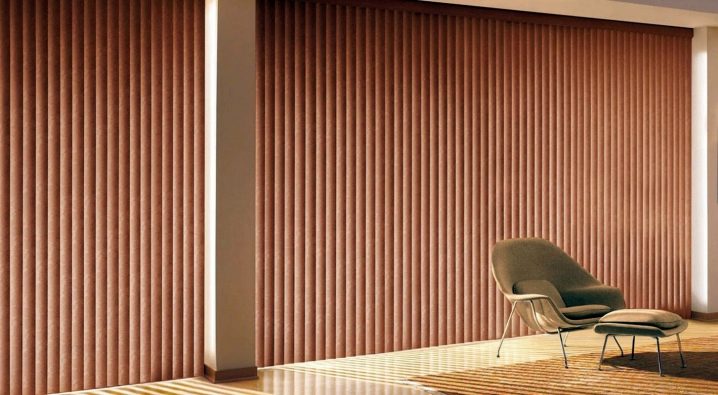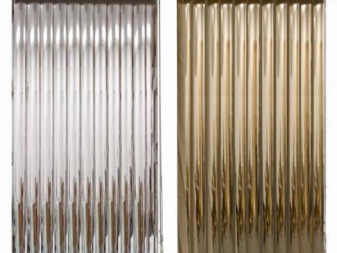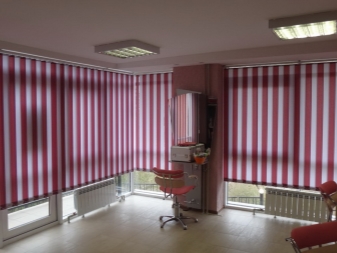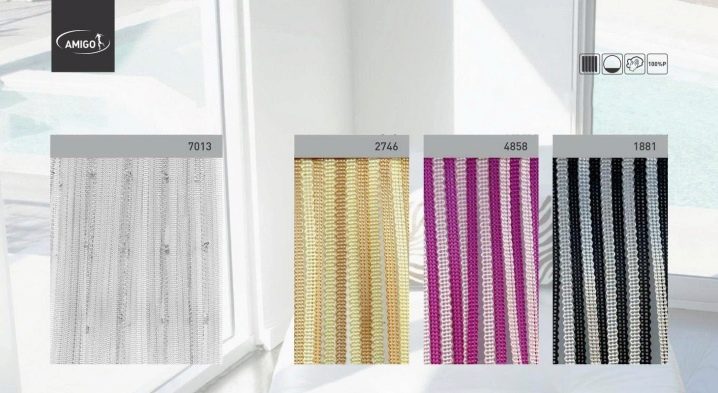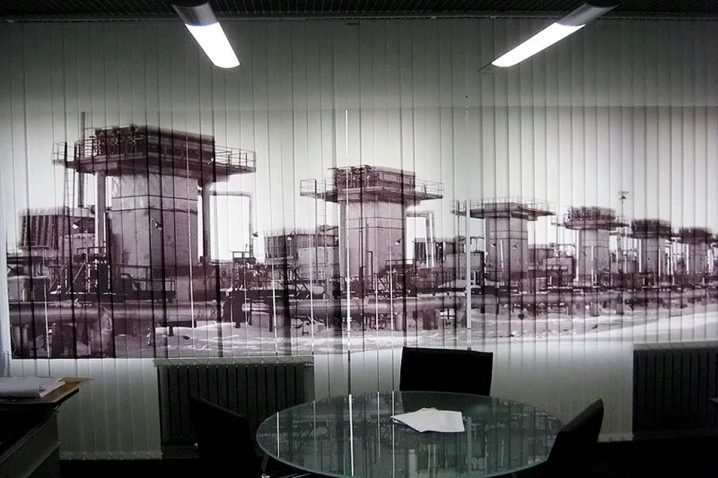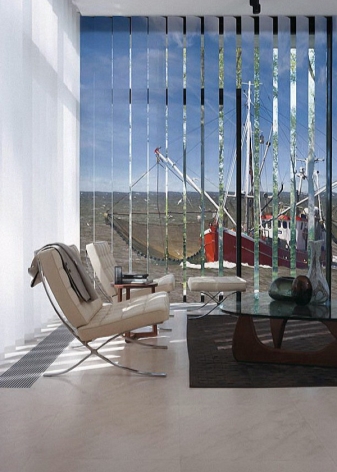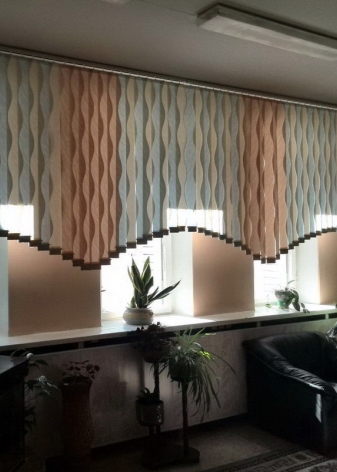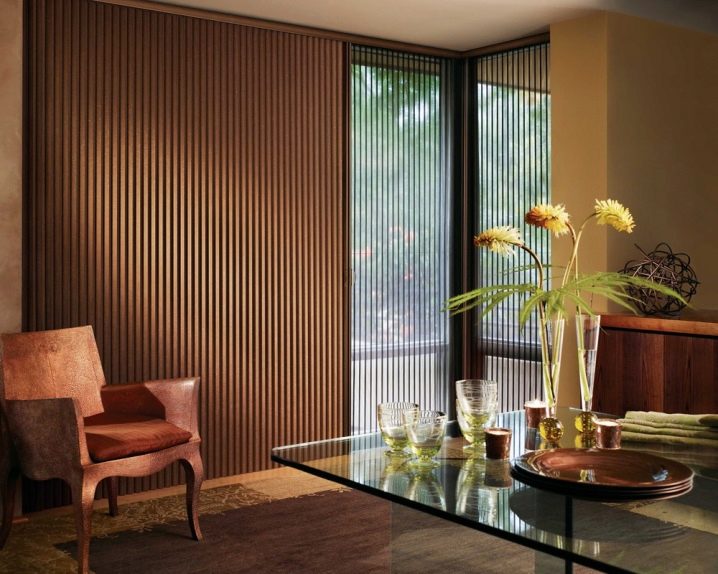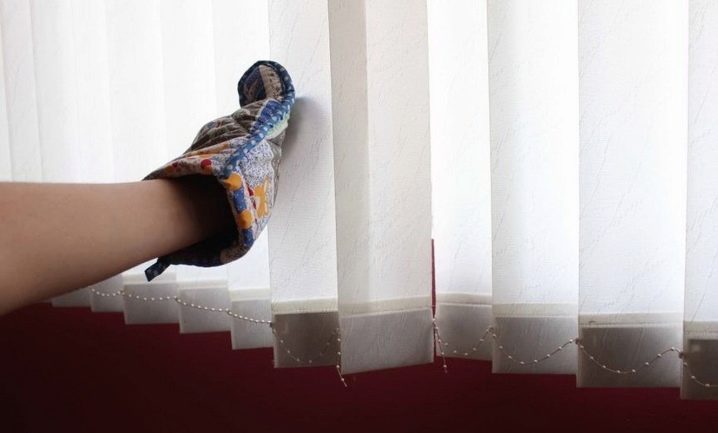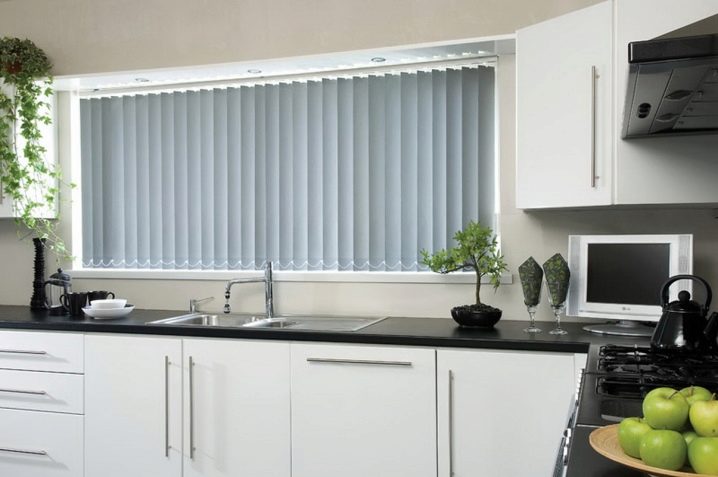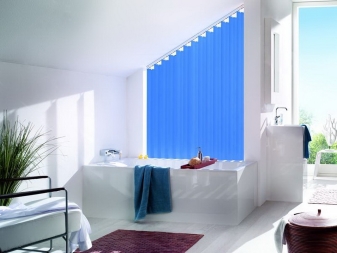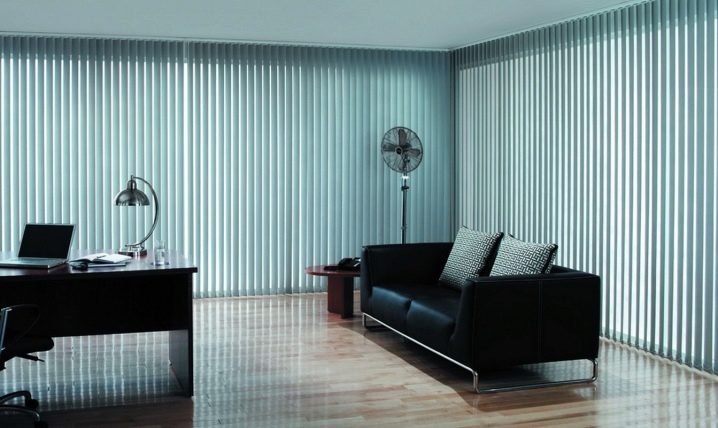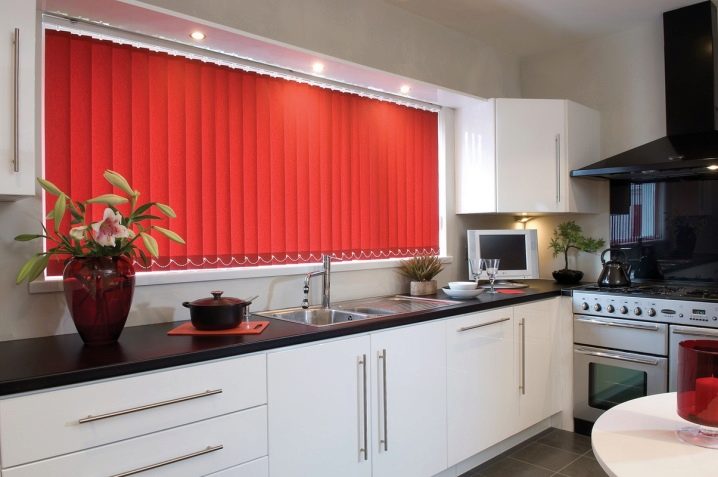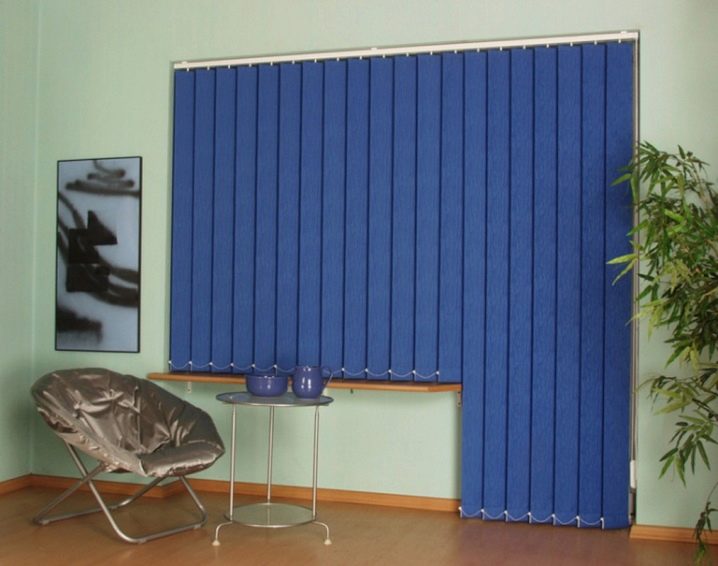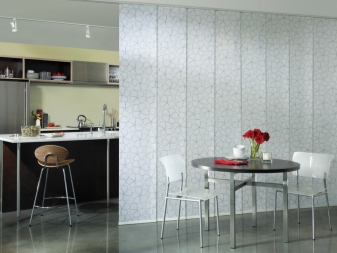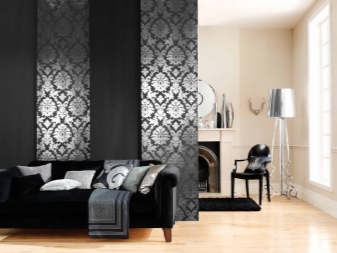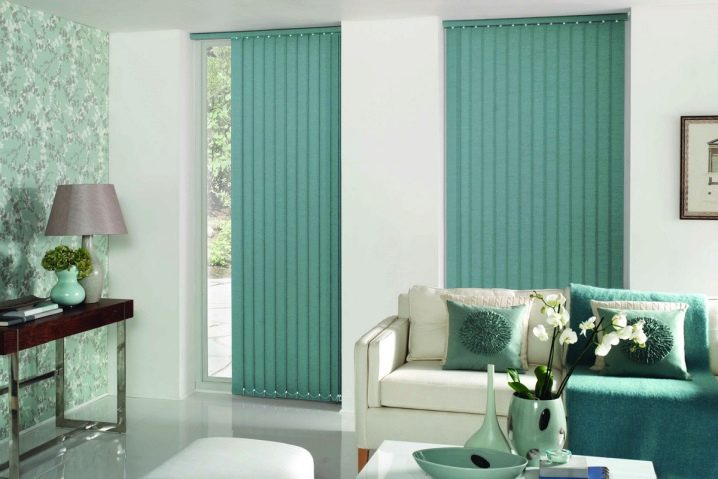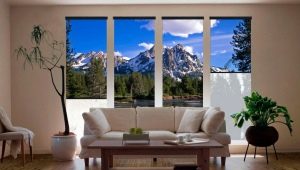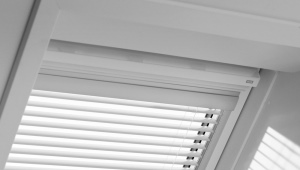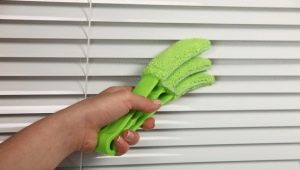Vertical blinds
Vertical blinds are no longer associated with offices. Now they can be seen not only in public places, but also in cozy apartments, and they even decorate a house better than the most beautiful curtains.
Description
Vertical blinds, as the name implies, are a simple and convenient light-shielding design, consisting of longitudinal vertical plates - lamellas. Vertical blinds have moved from office and medical institutions to ordinary residential buildings due to its practicality and aesthetic properties. With this movement, the same type of curtain of lamellae began to change for different stylistic directions in interior design. Today, a variety of materials, colors, textures and configurations are so wide that it’s easy to choose vertical blinds to the room for any purpose with any interior.
Specifications
Main characteristics of vertical blinds:
- Features of the room and colors.
- Type of mount.
- Control mechanism.
- Materials
- The total weight of the structure.
Accessories
At a glance, vertical blinds look like a series of longitudinal plates of thick fabric or rigid materials attached to the eaves. They move sideways, going behind each other and forming a narrow strip that resembles a curtain. From the point of view of construction, the curtains-blinds are arranged a little more complicated: the eaves with fasteners and control mechanism plus accessories. They consist of the following elements:
- The bearing eaves on which the curtain and decorative eaves (gruver) which plays a facade role is fixed.
- Sliders for mounting slats.
- The luminaire or “hangers” are devices that connect the vertical plates with the supporting eaves.
- Weights, weighting the canvas.
- Connecting chain running along the bottom edge of the slats.
- Control circuit for turning the plates to different positions around the axis.
- Control cord with a sinker - for the ability to move and push the curtains.
- Actually the lamellae are vertical plates that form the light-protective sheet on the window.
Accessories and components: ceiling bracket, holder, spare parts, bracket for groovers, fasteners, angles, latches, stoppers and c-clips, rings on the rod, chain locks, replacement parts.
Description to the components is in each instruction, where step by step everything is painted. The design may vary slightly depending on the control mechanism.
There are two main methods of control: mechanical and electrical. Mechanical is divided into:
- Rope or ribbon. One part of the mechanism is represented by a coil “cochlea” on which the control cord is wound, and the other part is a shaft inside the box. The mechanism is activated by a slight movement of the hand and is suitable for cloths made of aluminum and fabric that do not have a large dead weight;
- Spring-inertial. It works at the expense of the energy of the winding up during the installation of the spring, placed inside the shaft, which sets in motion the entire structure. Designed for blinds from heavier materials such as wood;
- Cardan and reed gear. From the outside, this system looks like a loop and a handle (grip) for rotating the web. She is responsible for the opening and closing of the blade and the rotation of the slats along the axis.Suitable for different weight designs.
Electrical (motorized control) has no variations. The closing mechanism is driven by a small electric drive built into the eaves; control is performed using the remote control or pressing a button on the wall switch. The movement of the mechanism is smooth and almost silent. Another key point that needs to be thought out in advance is to choose how the blinds will move. The first and second types imply a right-hand or left-hand opening, in which the entire canvas goes to one of the sides of the window. They are convenient for window openings up to 200-250 cm wide.
The third type is the sliding of the slats on the left and on the right side as usual curtains. It is recommended to use it with wide eaves of 250 cm for two reasons: for aesthetic purposes and in order to speed up the process of moving the blinds. The fourth type is not suitable for any windows, but in the case when there are two window openings up to 250 cm in width nearby. Lamellae with this type of control are shifted in the middle from both windows.
The fifth type is designed for very wide window openings. In fact, it is a bilateral option, but the left and right canvases are not fixed on one, but on two separate cornices.
Differences by type of attachment:
- Ceiling. The classical execution consisting of eaves, mechanisms of management and accessories.
- No drilling. Blinds are attached using cap brackets or adhesive materials. A practical option for plastic windows, if later the blinds are planned to be removed - there will be no traces left in the frame from the cap brackets.
- Wall mounted. They are fixed with brackets, but not to the ceiling, but to the wall.
- Door. Interroom blinds-accordion at the door.
Advantages over horizontal
The question arises as to how vertical blinds differ from horizontal ones, except that the slats are arranged vertically rather than horizontally. There are several major differences:
- Aesthetic quality. If horizontal blinds are characterized by simplicity of design, durability and good opacity, which makes them functional, then the vertical ones are also decorative and you can choose various accessories for them.
- The ability to cover a large area with one cornice. Horizontal blinds, as a rule, consist of narrow slats and are designed for minimalistic decoration of small windows. Vertical models have different widths and easily cover the area of large windows, arches and doorways.
- A variety of materials manufacturing. Unlike horizontal curtains, which are mainly made of aluminum and plastic, vertical ones exist in textile, plastic, aluminum, and wooden versions.
- A wide range of colors and textures. Vertical blinds due to the variety of materials are represented by smooth and embossed coatings of absolutely any color. Besides the fact that the lamellas have a volumetric pattern on the surface, they are variable in shape and can be both with a smooth and wavy edge.
- The original design of the room. Vertical curtains look cozier and more interesting due to their ability to transmit light. The option of an absolutely blind floor is also possible.
- Convenience of operation. Blinds collected at the side of the window opening, rather than at the top, continue to be a decorative element. In the upper part of the window, they do not play a decorative role, so the window looks "bare."
- Practicality. Vertical blinds are wider than horizontal ones; they are quicker and easier to remove from dust if they are made of aluminum, wood or plastic. Fabric options do not require hygienic procedures, as they are already saturated with a special compound that does not allow to accumulate dust and dirt. And when the need to clean the curtains still arise, fabric slats can be washed.
- Spectacular photo printing. On vertical blinds color printing looks more organic because of the larger area and decorative properties of the fabric.
disadvantages
The main disadvantage of vertical blinds is that they create noise when a large amount of air passes through them. Of the other disadvantages noted:
- Often there are difficulties when installing them.
- Plastic vertical slats are not used to decorate the overall windows.
- The material is quite heavy, the eaves can not sustain their weight. In such cases, experts recommend using lighter types of blinds or splitting into several sections.
Kinds
Decorative blinds are divided into:
- Arched. Vertical arched blinds - a canvas of slats,which, like curtains, covers the entire space from the eaves to the floor, while having different lengths of plates, or as a lambrequin, covers only the upper part of the window. Possible color combination of these options. Features of the design are in the flexibility of the eaves, whose profile is able to take the desired shape with angles up to 55 degrees relative to the horizontal line. With its flexibility, it has special stiffeners that keep the shape and ensure reliable operation. Decorative cornice in the design is missing.
- Inclined. This is a solution to shading windows of an unusual shape. Sloping vertical blinds are made according to individual measurements with different lengths of plates made of plastic or fabric. Fabric is more suitable for rooms in which there is no need to completely block the natural light, and plastic will be useful where complete darkness is desired.
The advantages of this type of blinds are several:
- The ability to create a unique interior.
- An organic combination of differently textured materials.
- Reliability and durability of the design.
- Convenience and practicality.
- Easy control with chain and cord.
Arched and tilted blinds necessary for installation on non-standard windows: triangular, bay, trapezoidal, in the form of a beveled quadrangle. Most types are suitable for sliding windows:
- Cascading or multi-textured. These are canvases on which, using a combination of different textures and shades, intricate patterns, drawings, waves, arches, and optical illusions are created. There are various options: a solid canvas with a pattern on the lamellae, curly lamella-lambrequins and blinds to the floor, several layers of lamella plates. In this case, the edges of the lamellae can be straight and wavy, and the bottom edge of a smooth, rounded, pointed or beveled.
- Blackout. Blackout is not a type of construction, but a type of fabric from which washable lamellas for blinds and roller blinds are made. This is a material of two or three layers, which has the unique property of blocking sunlight and UV rays. It is capable of high-quality insulation and sound insulation. At the same time, the fabric is distinguished by high aesthetic qualities and practicality. It does not fade, retains its shape after washing, is durable.Special impregnation does not allow dirt to accumulate on the surface of the plates, such as street and room dust. Blackout curtains are performed in all types of structures and with all kinds of control mechanisms.
- With photo printing. Due to the fact that the curtains of this type are wide and dense, they are ideal for drawing patterns. The drawing is applied with paint, which is distinguished by color saturation, resistance to fading and fading, environmental friendliness. Heat treatment of the fabric during the printing process makes the pattern resistant to wet cleaning and washing. The image can be absolutely anything: a company logo in the office space, a parade of planets in the children's bedroom, a rainforest in the bathroom, and any other plot that only occurs in the head.
- "String" (Breeze, Rain). An interesting kind of window canvases, which consist of filament (rope) slats. They let the rays of diffused light and play the role of a decorative element in the interior, but at the same time dense enough to cope with the function of curtains. The main difference from thick curtains is that they do not have weighting at the bottom."Brush" of ropes falls freely to the floor.
Features:
- Give the interior softness and comfort.
- There are three colors: monochromatic (classic), in bicolor with alternating colors in one row and two rows of different colors, multicolor (multi).
- Perfectly cope with the function of protection from light.
- They are used not only on windows, but also as curtains in doorways or instead of dense partitions for zoning a room.
- Harmonic. Another type of blinds as a division of the room into zones or door floors for those who are not suitable rigid static design. The main difference from window blinds is that the narrow plates of the door leaf, which fold up like an accordion, are a single whole. There are no gaps between them and such doors open only on one side. They are stable, compact, ergonomic and durable, but not suitable for use on windows.
Dimensions
Vertical blinds are very diverse in length and width. The minimum width is 35 cm, maximum - 600 cmwith lamella width 89 mm. There are also slats of a different width - 99, 127 mm and larger and wider plates. It is recommended to make the final indicator of the width of the blinds a multiple of 8 if they are shifted to one side and 16 with a two-sided version. The height of the canvas is also variable: minimum - 40 cm, maximum - 500 cm In office and public premises, more appropriate short options that close the window only to the level of the windowsill.
Experiments are allowed in the living space, especially if the windows are not high, as the vertical blinds visually stretch the space upwards. The combined variants, lambrequins and tulle, long lamels up to the floor look beautiful.
Color solutions
Designers offer to consider the following colors:
- For discreet and minimalist interiors monophonic canvases of light, pastel and delicate shades will do: cream, beige, powdery, pistachio, pink, blue. Popular modern styles can afford a brighter palette: fuchsia, blue, red, emerald, nut, yellow, lemon.
- Color pictures will help to revive the situation. contrasting color on a monochrome canvas, two-color combinations with different color ratios: alternation, layers, mix.The classic combinations are black with red, black and white, white and blue.
- Looks good peach with white, brown shades with apricot, milk, green, lemon, blue. In the youth and children's rooms are appropriate multi-colored options and photo printing. As for strict office interiors, transparent tulle blinds, neutral shades, blinds with a discreet pattern or company logo are relevant in them.
Materials
Blinds curtain rods are made of aluminum, plastic, metal and wood:
- Aluminum profile - the easiest and most flexible, therefore it is used for windows of non-standard forms.
- Plastic simple and economical and most suitable for office and municipal premises.
- Metal constructions the most heavy and reliable, but inferior in aesthetic qualities to other types.
- And finally eaves from tree species superior to plastic and metals in beauty, but at a price significantly higher. They are distinguished by durability, diverse appearance, and the ability to apply thread. They are made of fine wood. The basis for the manufacture of blinds more variable.
Lamellae are: plastic (plastic). Products from plastic and PVC have a number of positive operational characteristics:
- Repel moisture.
- Do not accumulate dust.
- Easy to disinfect.
- Do not fade.
- Pleasant to the eye.
Suitable for rooms that require special conditions of sterility: medical offices, children's rooms, public places:
- Fabric Textile segments are the most decorative and close to the traditional method of curling windows. They protect the room from direct sunlight, but they let in and diffuse light, which looks natural and beautiful. Variations of colors and combinations are very diverse, as are the types of controls. Among the advantages, it is worth noting the color fastness, protective impregnation against spraying and pollution, the ability to erase without damaging the form, a pleasant price.
- Jacquard. Made from high quality polyester. Differ in rigidity, simplicity in leaving, resistant water-repellent and dirt-repellent impregnation layer, wear resistance. With different brightness and color variations have a textured surface.
- Aluminum. Lamellas of various widths are made of perforated aluminum sheets.Almost any color is available. This species has a high degree of rigidity, is not afraid of damage, moisture, temperature extremes. Care and disinfection are required extremely rarely - once a month with a dry cloth, several times a year with a damp sponge. The best option for the office, a simple living room, bedroom, office.
- Tulle. When all sorts of tulle options have already been tried and you want something classic, but not trivial, tulle blinds will be an excellent solution. This is an unusual airy design of light flying fabric and plastic. At their core, they are thin monochromatic slats, which are covered with tulle covers. Visually, this creates the effect of lightness and airiness of the canvas, but at the same time they reliably protect from light, gently disperse it and decorate the room. Covers are attached to the runners with special buttons, so it will not be difficult to remove them and wash them, and the plastic is resistant to dust and dirt on its own.
- Bamboo. Bamboo lamels are oblong wide plates woven from bamboo straw. Their mesh structure is not able to completely protect the room from the bright light, so the bamboo blinds are more suitable for rooms that should be well lit.Their natural aesthetics perfectly complement the interior of the living room with a predominance of natural materials, thematic kitchen, study. Among the advantages, first of all, it is worth noting the environmental friendliness of the material. Also, they are distinguished by unpretentiousness, convenience, long service life, democratic price.
- Wood. Wood canvases are a rarity. They have a much greater weight than fabric or plastic, more difficult to fit into the interior, more demanding to care, are much more expensive than any other type. They are distinguished by prestige, elegance and variety in design. Wooden lamellas of different breeds are easily subjected to fine processing, they can be smooth, threaded, interspersed with other colors, with drawing patterns, combined from several types of wood.
- Mirror. The reflective surface on the window is a bold and unusual solution in the design of the room. This is a powerful technique for visually increasing space and window decoration at the same time. At the same time, they perform an additional function in the hot season - they reflect UV rays, preventing the room from heating up. "Mirror" - conditional name.In fact, the slats are not made of heavy glass, but with the use of plastic and reflective film.
- Combined. This name unites both a type of blinds, the canvas of which consists of slats of different colors and textures, and the method of decorating a window by combining blinds and other types of curtains. You can combine them in a single scale, using blinds instead of tulle and curtains or decorate the window with slats and veils or fabrics.
Popular manufacturers
Plastic models for offices are equally popular with manufacturers, cozy fabric options for living rooms that gently and beautifully scatter the light, the most deaf blackout blinds that provide a comfortable darkness for sleeping and coolness in the bedroom. Most popular companies:
- Russian company Amigo offers blinds of various types: vertical, horizontal, "mirage", "zebra", "pleated". From the verticals, you can choose the following types: fabric, breeze, plastic, aluminum and multi-effect. The company can also disassemble and repair old blinds.
- Company "LDstyle" independently produces and sells various types of blinds.That she is engaged in the production of photo blinds. The manufacturer offers to create them yourself, using, for example, a family photo. The company's management appreciates its customers, so you can order the desired option even on the manufacturer's website.
- Proma offers vertical fabric and rope blinds. The manufacturer produces the most budget option for window decorations. If you need to repair old blinds, then you can also contact the representative offices of this manufacturer.
Operation Tips
The rules for operating vertical blinds are simple. The slats can be open 180 degrees, tightly closed, or fixed at any angle to gently diffuse light. Bring them to a certain position, open, close, rotate, you can use the control circuit (smoothly lower one of its sides). Blinds can only be moved when the lamellae are turned perpendicular to the window, that is, they form a dense web. One-time use of the circuit and control cord is not recommended.
Due to the peculiarities of materials that do not absorb odors, do not accumulate dust and dirt, wash easily and repel moisture, you can use blinds in the premises for any purpose and plan.
Compact models fit the kitchen.which do not interfere with the ventilation of the room and reduce the risk of ignition of curtains from the cooking surface near. In the pantry, you can install blinds, harmonica; They will also be suitable for zoning a room or partition into the corridor.
In the living room is to choose one of the fabric variations, and for the bathroom more plastic slats will be more practical. In the bedroom, it will be useful to install blackout protection from light in the form of curtains, and on the loggia or balcony - a mirror design. Outside the dwelling, for example, in the office, it is better to give preference to plastic or wood.
Examples in interior design
Office window design options are applicable in the interior of the living room, especially if the emphasis is on bright design.
In the kitchen, you can also choose a bright version of fabric blinds.
Replace the balcony door can also be vertical blinds. They can be used instead of the door to the pantry.
For room zoning, many designers use vertical blinds.
They are even located in the doorway.
In the next video, see the review of vertical blinds "Breeze".
